Themed collection Advances in Directed Self-Assembly

Advances in directed assembly: a themed collection
Guest Editors Paul F. Nealey and Mark Stoykovich introduce this themed collection of papers.

Mol. Syst. Des. Eng., 2017,2, 517-517
https://doi.org/10.1039/C7ME90020A
Inverting the design path for self-assembled block copolymers
Recent success of inverse design methodologies in the realm of self-assembled materials has allowed us to envision an inverse path of discovery where we go from a desired target function to building blocks.
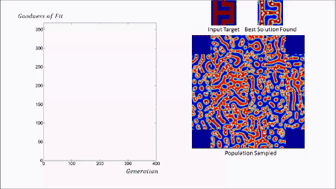
Mol. Syst. Des. Eng., 2017,2, 539-548
https://doi.org/10.1039/C7ME00062F
Beyond native block copolymer morphologies
Block copolymers self-assemble into a range of canonical morphologies. Here, we review a broad range of techniques for inducing these materials to form structures beyond the ‘native’ morphologies seen in the bulk equilibrium phase diagram. Methods that exploit intrinsic encoding (molecular design) and external enforcement (directed assembly) are compared.
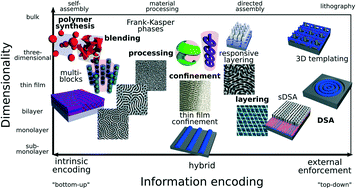
Mol. Syst. Des. Eng., 2017,2, 518-538
https://doi.org/10.1039/C7ME00069C
Optimizing self-consistent field theory block copolymer models with X-ray metrology
Self-consistent field theory is optimized through comparisons with X-ray scattering metrology.

Mol. Syst. Des. Eng., 2018,3, 376-389
https://doi.org/10.1039/C7ME00098G
Directed assembly of metal nanoparticles in polymer bilayers
The integration of layer-by-layer (LbL) and self-assembly methods has the potential to achieve precision assembly of nanocomposite materials.
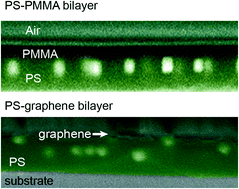
Mol. Syst. Des. Eng., 2018,3, 390-396
https://doi.org/10.1039/C7ME00104E
Continuum models for directed self-assembly
The computational description of directed self-assembly (DSA) of copolymer materials requires the prediction of large-scale structure formation of copolymer materials guided by chemical or topographical patterns. Continuum models provide the highest level of coarse-graining describing the system only by the local composition and allowing for a fast optimization of thermodynamic quantities.
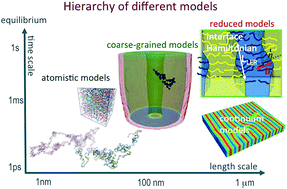
Mol. Syst. Des. Eng., 2018,3, 295-313
https://doi.org/10.1039/C7ME00109F
Preferred domain orientation in block copolymer fibers after solvent annealing
Via solvent annealing, PMMA-b-PS nanofibers form long-range ordered nanostructures with a preferred domain orientation that is perpendicular to the fiber axis. Solvent annealing represents a powerful new strategy for controlling the block copolymer nanostructures in fibers.
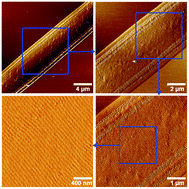
Mol. Syst. Des. Eng., 2018,3, 357-363
https://doi.org/10.1039/C7ME00122C
Determination of the maximum thickness for directed self-assembly of cylinder-forming PS-b-PMMA films on chemical patterns
A transition from substrate-controlled directed self-assembly to surface-controlled self-assembly is located in assembled cylinder-forming PS-b-PMMA films with the thickness of up to ∼5Lo on chemical patterns.
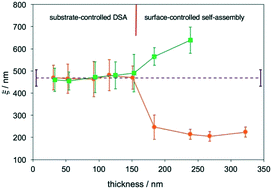
Mol. Syst. Des. Eng., 2018,3, 342-347
https://doi.org/10.1039/C7ME00101K
Cooperative effects of inorganic and organic structure-directing agents in ZSM-5 crystallization
A combination of bulk crystallization studies and molecular modelling are used to elucidate the role of dual inorganic/organic SDAs in ZSM-5 synthesis. Our findings reveal unexpected synergistic effects on crystallization times and physicochemical properties.
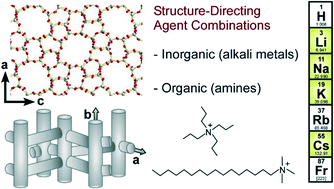
Mol. Syst. Des. Eng., 2018,3, 159-170
https://doi.org/10.1039/C7ME00097A
Nanolithography of cylinder forming block copolymers via DSA for semiconductor manufacturing
To realize the full benefit of directed self-assembly (DSA), it is necessary to understand the interplay between the target structures and the process parameters.

Mol. Syst. Des. Eng., 2017,2, 605-615
https://doi.org/10.1039/C7ME00066A
Spatially-controllable and uniform photochemical transfer printing of block copolymer nanopatterns
This work describes the use of a bilayer conformal layer strategy to transfer print the chemical nanopatterns from one substrate to another, enabling the successful directed self-assembly of block copolymer thin films with 1 : 1 microdomain registration.
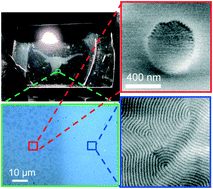
Mol. Syst. Des. Eng., 2017,2, 597-604
https://doi.org/10.1039/C7ME00106A
Directing block copolymer self-assembly with permanent magnets: photopatterning microdomain alignment and generating oriented nanopores
Phase behavior and dynamics of a LC block copolymer are manipulated by labile mesogens to enable alignment, photopatterning and nanopore orientation at low magnetic fields.
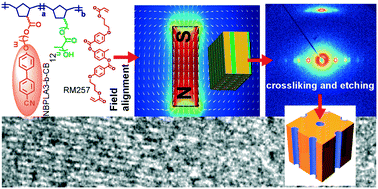
Mol. Syst. Des. Eng., 2017,2, 549-559
https://doi.org/10.1039/C7ME00070G
Synthesis of poly(styrene-b-4-(tert-butyldimethylsiloxy)styrene) block copolymers and characterization of their self-assembled patterns
Self-assembly behavior of poly(styrene-b-4-(tert-butyldimethylsiloxy)styrene) (PS-b-P4BDSS) block copolymer and the effect of polydispersity on self-assembled pattern quality.
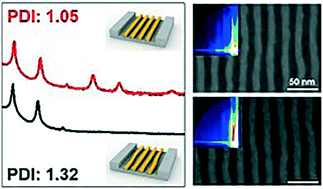
Mol. Syst. Des. Eng., 2017,2, 589-596
https://doi.org/10.1039/C7ME00085E
Molar mass and composition effects on the thermal stability of functional P(S-r-MMA) random copolymers for nanolithographic applications
The thermal stability of P(S-r-MMA) random copolymers for BCP-based nanolithography is discussed with reference to molar mass and composition.
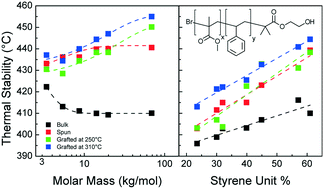
Mol. Syst. Des. Eng., 2017,2, 581-588
https://doi.org/10.1039/C7ME00064B
Electric field directed self-assembly of block copolymers for rapid formation of large-area complex nanopatterns
We investigate the unusually rapid directed self-assembly of block copolymer (BCP) thin films by imposing an in-plane electric field.
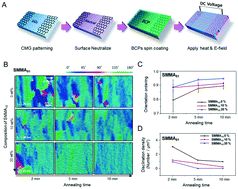
Mol. Syst. Des. Eng., 2017,2, 560-566
https://doi.org/10.1039/C7ME00067G
Design of surface patterns with optimized thermodynamic driving forces for the directed self-assembly of block copolymers in lithographic applications
A theoretical method for developing design rules for the directed self-assembly of block copolymers for lithographic applications.
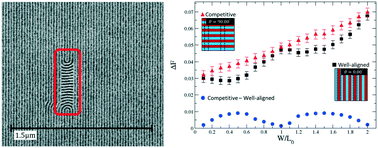
Mol. Syst. Des. Eng., 2017,2, 567-580
https://doi.org/10.1039/C7ME00028F
About this collection
From MSDE
Guest Edited by Professor Paul Nealey and Dr Mark Stoykovich at the Institute of Molecular Engineering at the University of Chicago, USA.
This collection aims to highlight recent progress in the field of directed self-assembly, with a special emphasis on the use of templates, external fields, and/or control of molecular-level interactions to induce self-assembling materials such as polymers, liquid crystals, and nanoparticles to organize with precise two- or three- dimensional nanostructure. We want to emphasize, where possible, how the structure resulting from directed-self-assembly (not self-assembly) of the materials system imparts specific properties, function, or organization over device-relevant length scales that enable specialized applications.